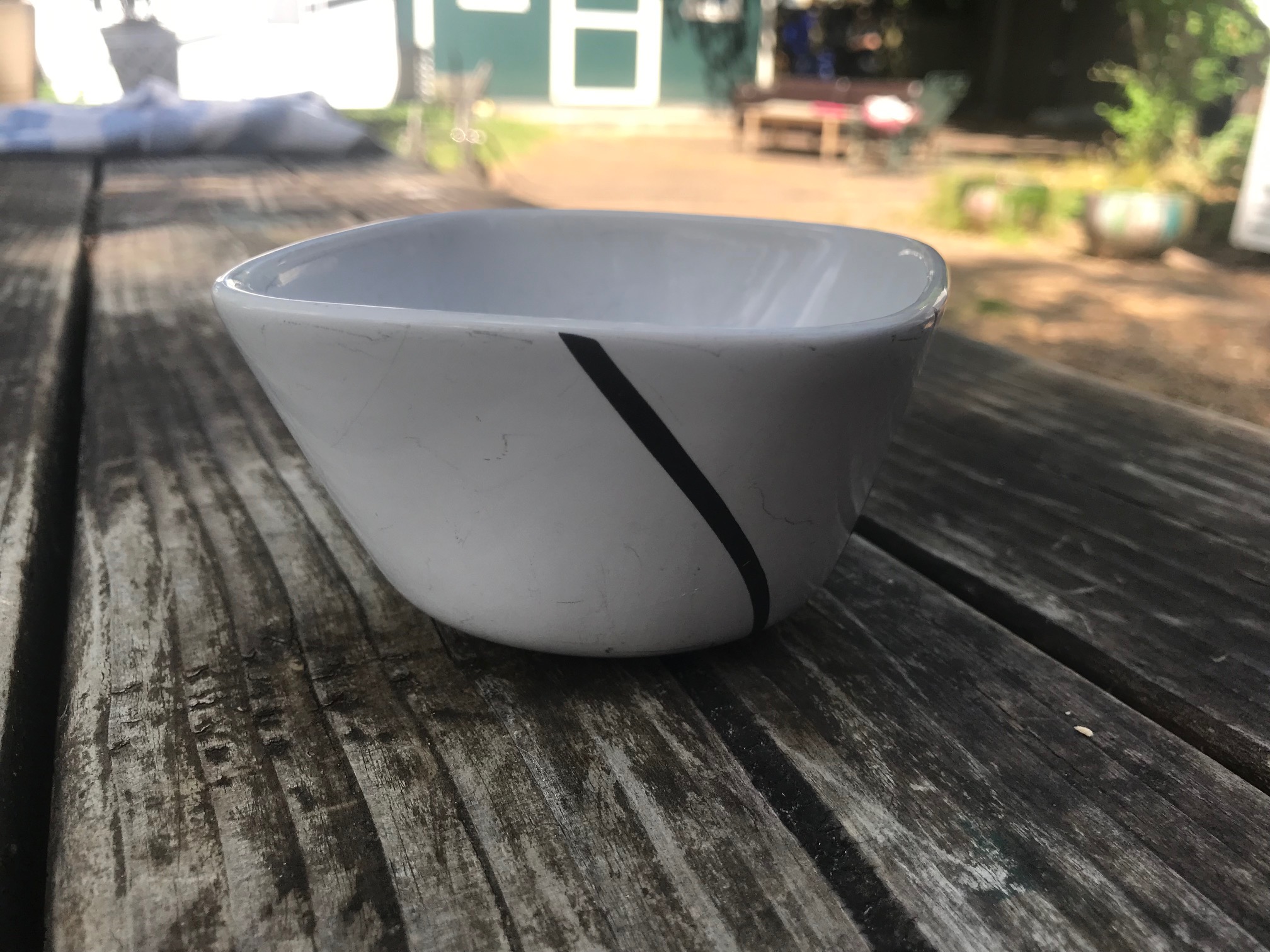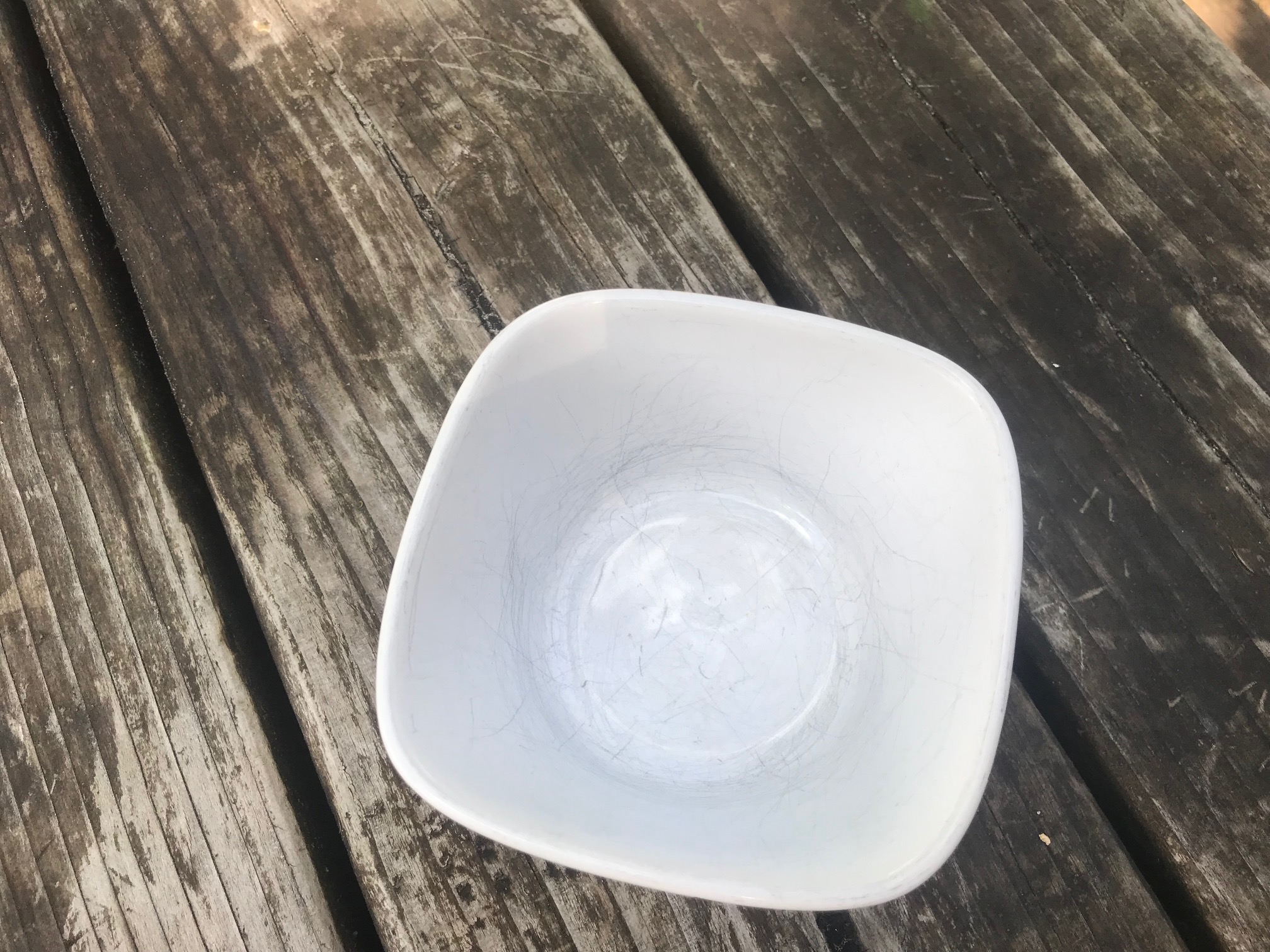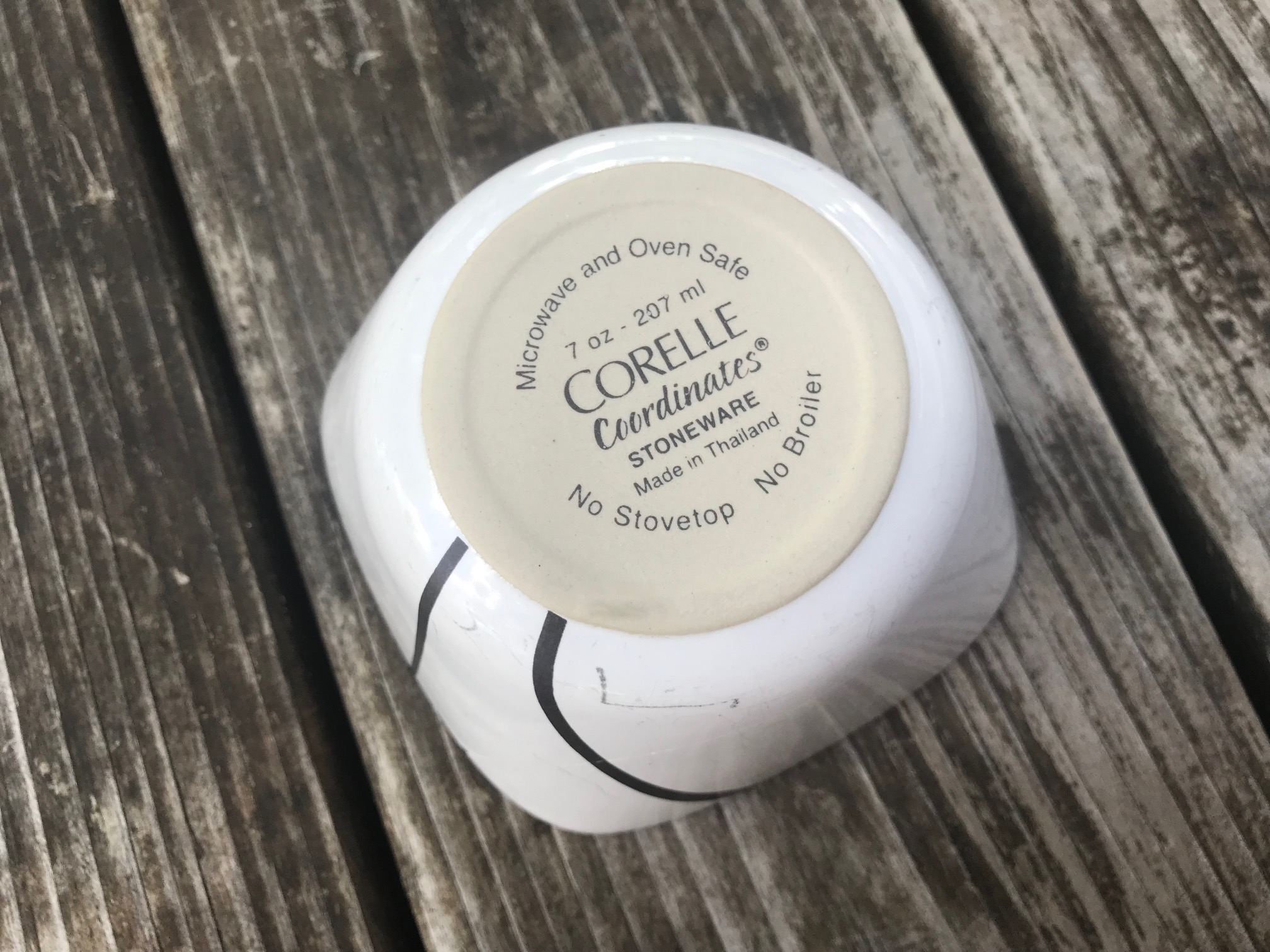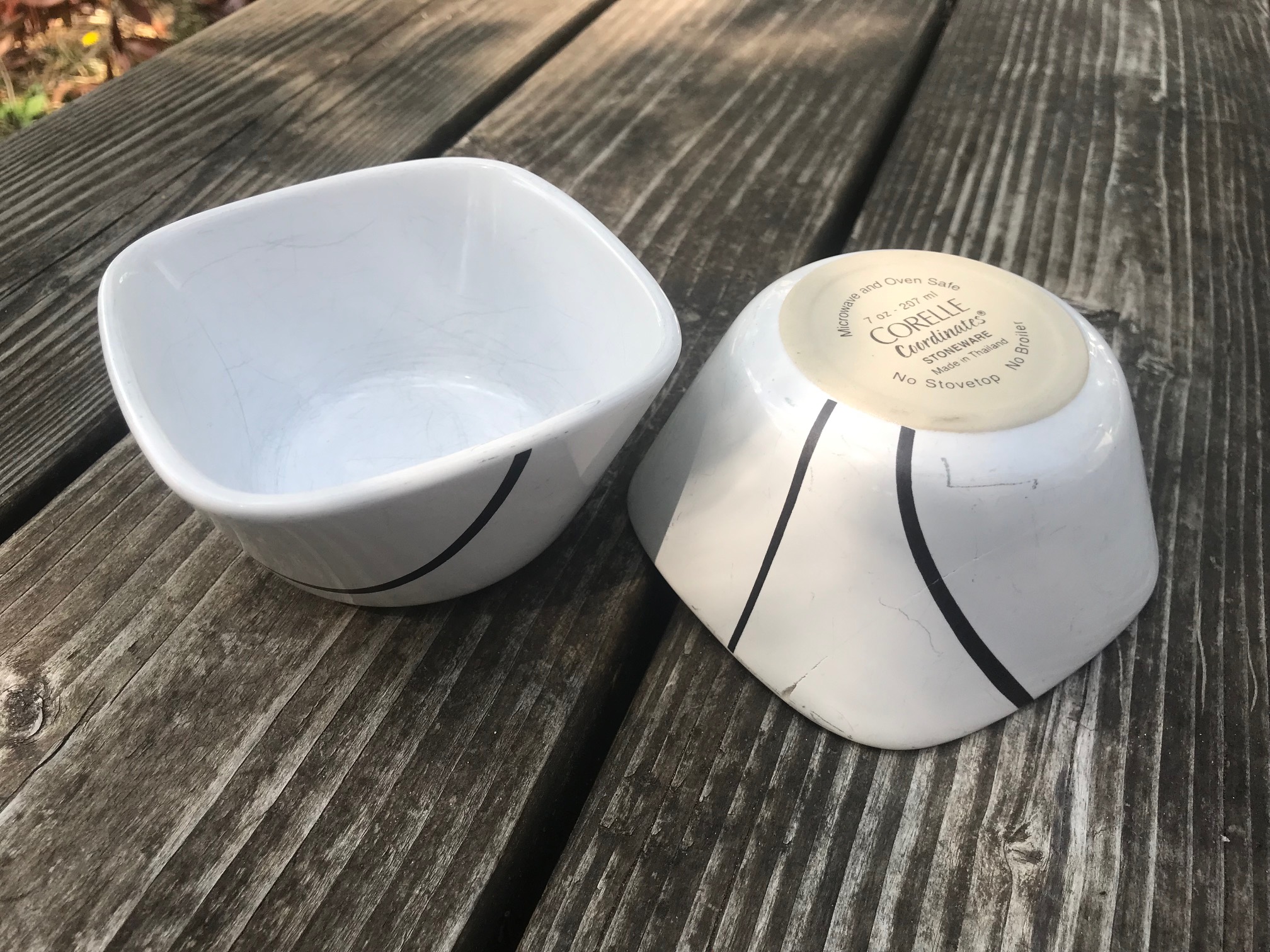Corelle Coordinates White Stoneware Dish with Black Stripe Design: 92 ppm Lead (within safe range).
When tested with an XRF instrument the dish pictured here had the following readings:
Test focused on area of dish with black stripe:
- Lead (Pb): 92 +/- 34 ppm
- Barium (Ba): 2,744 +/- 235 ppm
- Chromium (Cr): 1,999 +/- 185 ppm
- Antimony (Sb): 95 +/- 45 ppm
- Tin (Sn): 303 +/- 47 ppm
- Zinc (Zn): 40,700 +/- 1,600 ppm
- Copper (Cu): 626 +/- 105 ppm
- Iron (Fe): 4,099 +/- 428 ppm
- Vanadium (V): 1,825 +/- 155 ppm
- Titanium (Ti): 3,538 +/- 275 ppm
- Zirconium (Zr): 35,900 +/- 1,700 ppm
- Cobalt (Co): 1,973 +/- 257 ppm
Test focused on area of dish with only plain white glaze:
- Lead (Pb): 67 +/- 28 ppm
- Barium (Ba): 2,151 +/- 178 ppm
- Zinc (Zn): 40,000 +/- 94 ppm
- Copper (Cu): 638 +/- 94 ppm
- Iron (Fe): 478 +/- 196 ppm
- Vanadium (V): 1,557 +/- 129 ppm
- Titanium (Ti): 3,326 +/- 241 ppm
- Zirconium (Zr): 32,300 +/- 1,300 ppm
- Platinum (Pt): 385 +/- 188 ppm
Metals not detected by the XRF in “Consumer Goods” mode are not listed. Tests were done for a minimum of 60 seconds each to confirm the reading. Results are science-based and replicable and conducted with a Niton XL3T XRF in “Consumer Goods” mode.
As always, please let me know if you have any questions.
Thank you for reading and for sharing my posts.
Never Miss an Important Article Again!
Join our Email List







I have square bowls that were sold in a very similar line , corelle stoneware. It is a dark hunter green inside and matte black on the outside. All of the matching plates broke but the bowls survived my Childrens careless dishwasher chores. Have you tested any of the other stoneware lines?